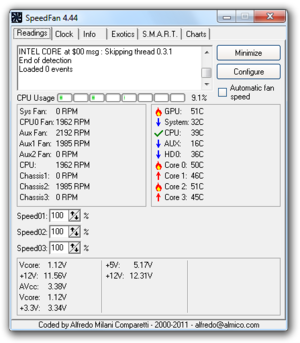How to check CPU temperature ? Top methods to reduce overheating
Heat is a computer’s enemy. To prevent overheating, computers are specifically designed with heat dispersion and ventilation. When too much heat builds up, there's a chance that the computer may become unstable, resulting in unexpected shutdown or some component damage.
There are several ways to check the CPU's temperature. Users, who prefer the hard way, can open the BIOS settings where third-party tools can be used to check the temperature of the CPU. However, there are various CPU temp monitor tools for Windows 10. These tools may work with older versions such as Windows 7 and Windows 8.1. Here is the list of top 5 free tools for checking CPU temperature.
1. Open Hardware Monitor
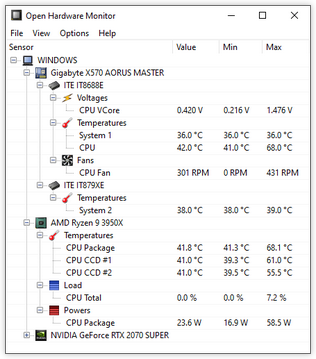
The first one on the list will be the Open Hardware Monitor tool. As the name says, the tool is open source and can be downloaded for free. The UI is clean and easy to use, also CPU temperature can be checked along with the GPU. It also displays various details like RAM consumption, CPU operating speed, and the power supply stats.
2. Speccy
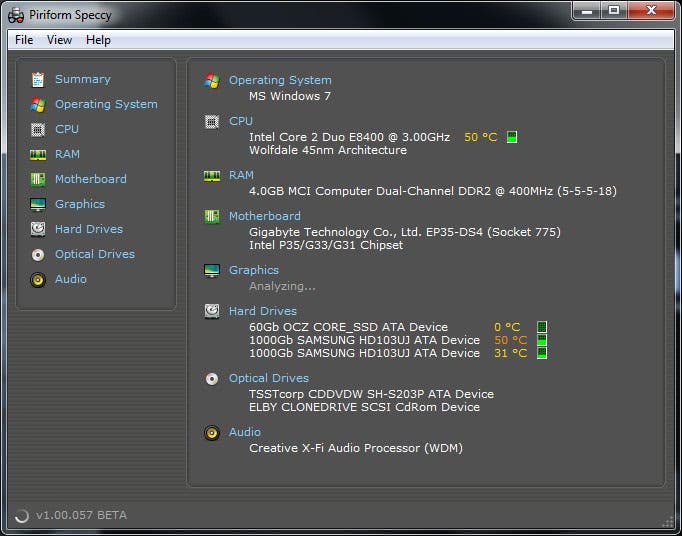
Speccy is a famous tool developed by Piriform CCleaner. The tool provides a lot of information, in addition, it's arranged in a way that makes it easy to understand. The only disadvantage is the lack of information related to internal-GPU.
3. HWMonitor
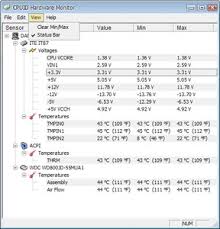
CPU-ID developed this software that is very popular to check CPU temperature. It offers more details regarding the hardware and can also show temperature readings for the integrated GPU in addition to the CPU.
4. SpeedFan
Another CPU temp monitor tool that one can try on your Windows 10 (or older) machine is SpeedFan. The main purpose of SpeedFan is to let users manually control the speed of the cooling fan on your machine. Moreover, there are numerous other functions that analyze the temperature of the PC.
5. Core Temp
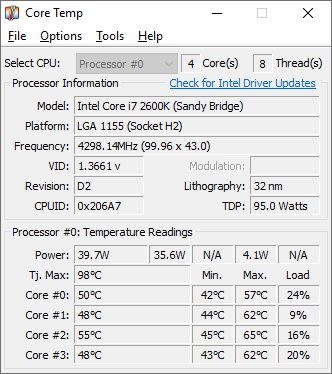
Core Temp is the last one on the list that can be used to check CPU temp. One major thing is that users can view the temperature levels in the notification area in the Taskbar. One of its selling points is that you can add a bunch of add-ons to improve its functionality. For example, Core Temp Gadget can we added, which is a widget displayed on the screen.
How to fix CPU Overheating?
Overheating is a major issue nowadays and can cause many problems that can damage the PC. Here is the list of measures you can make to reduce overheating.
1. Maintain good airflow around your PC
The most basic and essential method is to maintain airflow to keep the machine cool. Remove any obstacles that are obstructing the airflow and also check if the fan inside the CPU is working properly or not.
2. Choosing the right case
The case plays a crucial role in maintaining proper airflow dynamics and ensure heat is dissipating efficiently.
3. Using PC at low-power settings
Using a PC at high-power has many benefits. However, the computer doesn't need that much power at all times and many people forget to switch back to low-power after using it. Sometimes. it may be the cause for overheating and one should keep that in mind.
4. Check for the external culprits
Another reason why the PC overheat is because of some apps running on it. If the temperature levels on your machine are significantly higher when you’re doing nothing, then the culprit could be some other apps that are exhausting all the system resources. So, it is advised to find and shut them down using the Task Manager.
5. Cleaning the blocked heat sink and remove internal dust
Dust may get deposited inside the machine and may overheat it and affect the performance. Cleaning the machine on regular basis can prevent overheating. Also, one might consider cleaning the heat sink and other components of the machine.
Best Smartphone Under Rs. 20000
Related post
0 comments
Leave a reply
Please Login or Register to Comment. Get StartedBest Smartphone Under Rs. 20000

